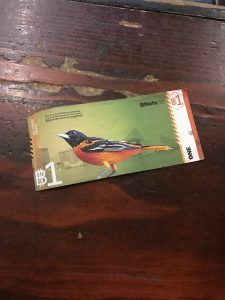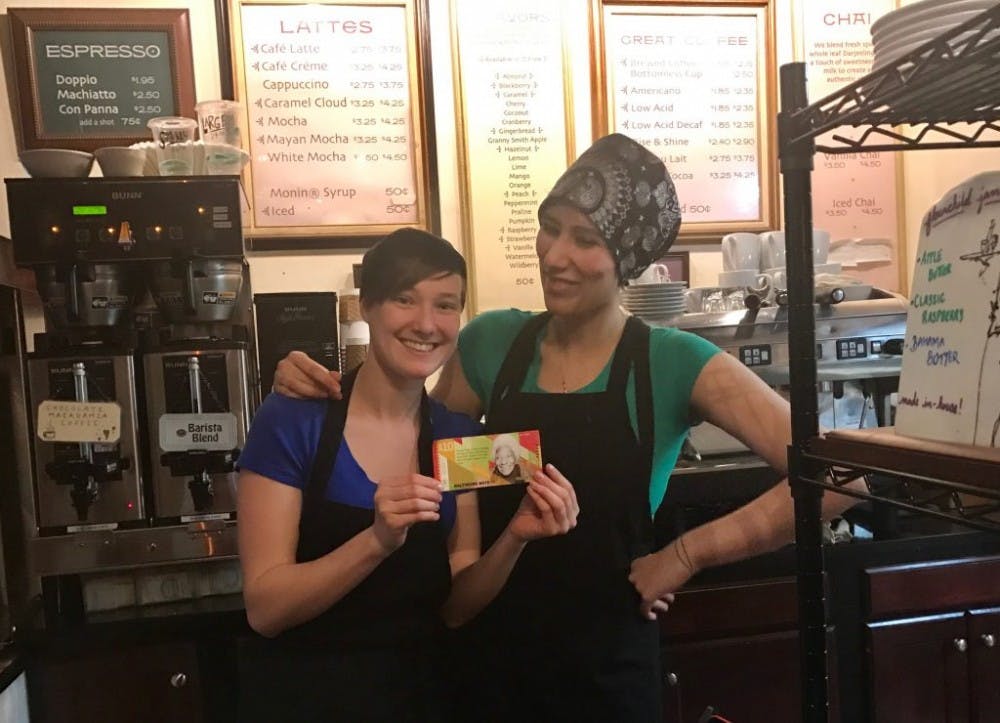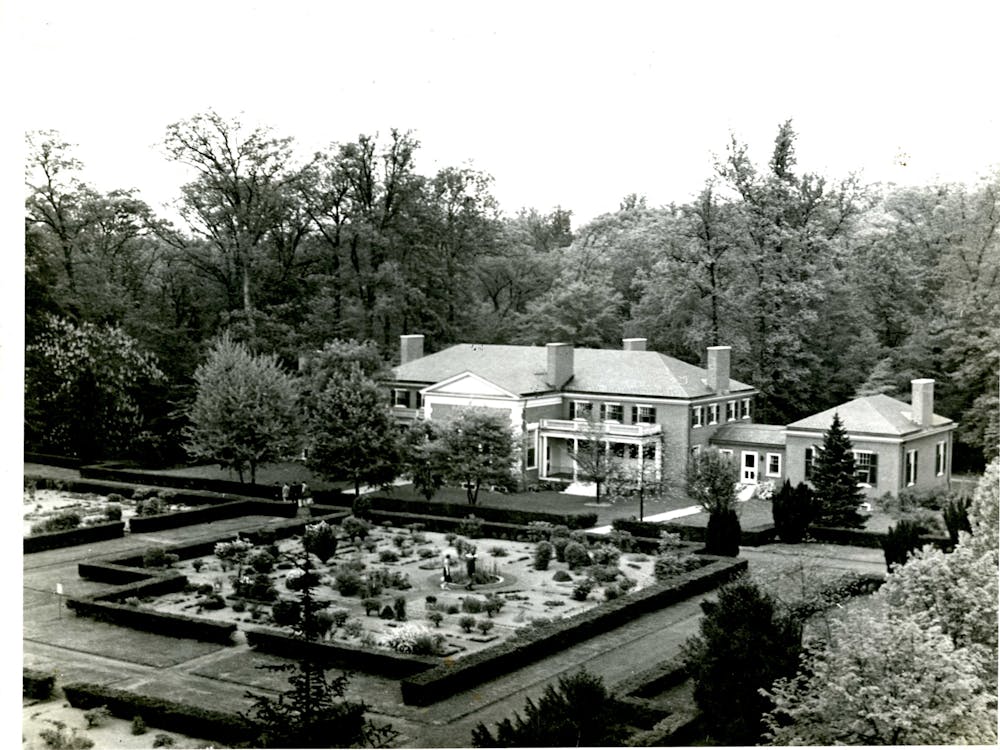The first Baltimore BNotes, a type of local Baltimore currency, were printed in 2011 by the Baltimore Green Currency Association (BGCA).
Over 230 businesses now accept BNotes and seven of these businesses serve as designated money exchange locations where people can exchange 10 U.S. dollars for 11 BNotes.
There are currently over 45,000 dollars worth of BNotes in circulation.
Jeff Dicken, the director of the BGCA, explained that a local currency is a complementary currency introduced in a specific geographical area that aims to facilitating community commerce.
Dicken stressed that the BNote aims to keep more money within Baltimore communities by incentivizing spending at local businesses.
According to Dicken, local businesses on average spend three times as much in their local area. Dicken, along with other proponents of local currencies, argues that this can generate an accumulation of wealth over time.
“With most people using local currency as much as possible, the city would have enough wealth to fund rec-centers and local projects, without resorting to bond issues and borrowing from the large banks,” Dicken wrote in an email to The News-Letter. “It is one tool that can lead to a more sustainable and less extractive economy in general.”
Dicken explained that the idea of a local currency for Baltimore was originally conceived in 2009. He was first introduced to local currencies by a member of the Evolver Social Movement then.
The BGCA, a non-profit organization, was founded in 2010 to administer the BNote. Dicken, along with Evolver members and the directors of the BGCA, pitched the idea to local businesses. Once enough business owners had agreed, BGCA launched an online fundraiser to finance printing the bills. Businesses that took part included cafes, hair salons and hardware stores, among others.

Since then, the BGCA has organized more online fundraisers, held an art auction and applied for grants from non-profits to help fund the currency.
Dicken explained some of the difficulties the Association faced in funding, promoting and sustaining the BNote project. He stressed the positive impact it can have on the community.
“We face challenges in the areas of resident awareness, consistent resident use of BNotes once they are supportive, business retention (many small local businesses close within a few years), retention of volunteers, finding time to canvass for new business acquisition and persuading non-profits and other potential funders,” he wrote.
Dicken wrote that during the first year, many of the planners used their own money to help fund promotional materials for BNotes.
“Since then, aside from the printing costs, we have continued to operate on a very limited budget, but we find that our efforts on this project go very far in relation to the time and money we put into it, since the system has such positive dynamics by design,” he wrote.
Olivier Jeanne, an economics professor at Hopkins and senior fellow at the Peterson Institute for International Economics, questioned the realistic advantages a local currency would have in Baltimore.
Jeanne explained that local currencies can provide benefits when there is financial instability, like hyperinflation, since the local currency can be substituted for the official currency. He argued, however, that since this is currently not the case in the U.S., the potential benefits of BNotes remain ambiguous.
“Unless these dollars are used in way that benefits the local community, it is not clear what is gained from using BNotes rather than dollars,” Jeanne wrote in an email to The News-Letter.
Dicken, on the other hand, emphasized that the BNote was designed to positively impact the community.
“The BNote was created to take back some of the power of our economy and have it work for residents, their communities and the City itself. It seemed like the most powerful thing we could do to even the economic playing field here in Baltimore,” he wrote.
According to the BGCA’s website, having a local currency is intended to create a “reservoir” of money circulating in the city that cannot flow out through national chains. BGCA argues that money leaves the city through national corporate chains to the benefit of their shareholders.
Even though the BNote gives buyers a boost in their purchasing power with participating businesses, the flipside is that if a business exchanges them for dollars, they will lose 10 percent of their revenue.
However, Dicken stressed that participating businesses have not incurred losses.
“The 10 percent they are giving up on that exchange generally amounts to a very small sum, and our efforts to help drive customers to local businesses through their inclusion in our directories, and our promotion of their specials on social media, more than make up in marketing for these small costs they may incur,” he wrote.
He further emphasized that BNotes were not designed to be exchanged back into the national currency, but rather meant to circulate within Baltimore and generate commerce between local businesses.
“Businesses who are accepting and then using BNotes for some of their own expenses with other merchants within the network are not experiencing any negative financial effects, as they come in like a dollar and then are spent like a dollar,” he wrote.
Dicken also said that few businesses have exchanged their BNotes for dollars.
“That is the intent of the system — to keep them circulating as money and enabling all of the transactions that need to be done on a local level, even down to yard sales and babysitting,” Dicken wrote.
He continued by highlighting how BNotes may inspire businesses to use more locally sourced supply chains.
“It may even inspire businesses to find local sources for products or services they are getting from outside our local economic ecosystem,” he wrote.
Carma’s Cafe, a favorite hangout and coffee shop for Hopkins students and local residents, supports the BNote.
Carma Halterman, the Cafe’s owner, explained how her business uses BNotes.
“We have a small but loyal group of customers that shop with BNotes,” she wrote in an email to The News-Letter. “The cafe spends our BNotes at other local businesses, such as Belle Hardware and occasionally buys services such as plumbing, painting, etc.”
Before opening the Cafe, Halterman was on the board of Women Entrepreneurs of Baltimore and earned a graduate degree from New Hampshire College in Community Economic Development.
Dahlia Quinn, a Carma’s employee, believes that using BNotes can positively serve the city.
“I think the BNote is a cool way to get people to support local businesses and buy local. I feel like it helps stimulate the local economy and encourage commerce within the city,” Quinn said.
However, few Hopkins students know about BNotes, and there are no other businesses within Charles Village besides Carmas that currently accept BNotes.
Businesses nearby that accept the currency are clustered around Station North and Hampden. Carma’s Cafe is listed as an exchange location, although it is currently “on hiatus” according to the BGCA’s website.
The BGCA printed its second series last year. Dicken summarized the impact that the BNote has already made on the Baltimore community.
“It has inspired people to think about who they are supporting when they spend money each day,” he wrote. “Do they want it to go to a corporate chain like Starbucks that will send it away from the city or a small local café that pays a better wage and treats its employees fairly?”























Please note All comments are eligible for publication in The News-Letter.